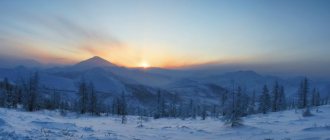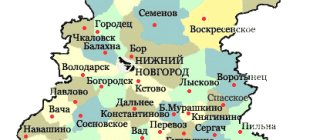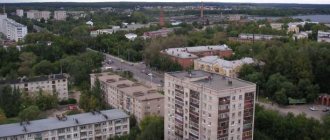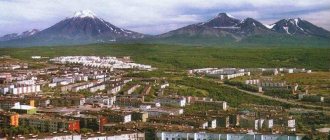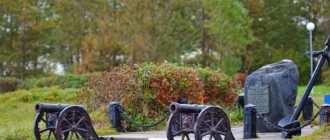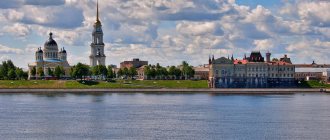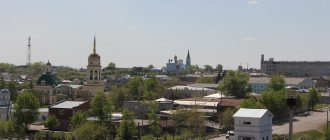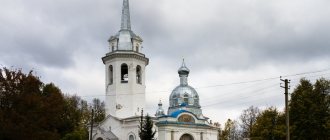What a tourist can see in Satka in one day
Satka was founded at the end of the 18th century, when an iron smelter was opened on its territory. From that moment on, the city began to develop and attract a large number of merchants, industrialists and even members of the royal family. Satka has several unique attractions that tourists can visit in 1 day.
Zyuratkul National Park
- Coordinates on the map: 54.794573, 59.054661.
Zyuratkul National Park has existed since 1993. The attraction was created with the aim of protecting and preserving unique natural landscapes, archaeological monuments, flora and fauna.
The area of the park is 882 km2. The territory is covered with dense mixed forest. Here mountains and ridges rise, the clearest lakes turn blue. The flora of the park is represented by spruce, fir, birch, as well as species listed in the Red Book: large-flowered slipper, Ural anemone, leafless beetle, etc.
The forests are home to a wide variety of animals: bears, wolves, martens, moose, wild boars. The lakes have a rich ichthyofauna; they are home to pike, burbot, grayling and bream. Rare species of animals and birds, such as European minks, golden eagles and peregrine falcons, are under special protection.
Archaeological research is often carried out in the park. On the shore of Lake Zyuratkul, traces of sites of ancient people were found. The remains of dwellings, tools and everyday life date back to the Neolithic and Mesolithic eras. Scientists also discovered a geolyph with an image of an elk, whose age can reach 8 thousand years.
During the excursion, tourists visit Lake Zyuratkul, five ridges (including the main ridge “Zyuratkul”, to the foot of which an eco-trail leads). Children can benefit from visiting the local zoo. There they will be able to see the Himalayan bear, feed the reindeer, and in winter ride a dog sled.
Entertainment complex "Sonkina Lagoon"
- Address: st. Bocharova, 9.
“Sonka Lagoon” is an island of the Middle Ages in the middle of a modern city. The entertainment complex was founded in 2010 on the shore of the lake. The creator of the park is Yu.I. Kitov - gave him the name in honor of his granddaughter Sonya.
The centerpiece of the theme park is a full-scale stone fortress with round towers, moats, wide staircases and cobblestone paths. The territory is decorated with sculptures of animals and heroes of medieval history. Fountains gush on green lawns.
A pirate ship is moored near the shore. Anyone can climb onto the captain's bridge, turn the helm, learn how to tie sea knots and take a photo in a pirate costume with a parrot on his shoulder.
The entertainment complex includes a small island in the middle of the pond. A special boat takes tourists there. Arriving on the island of "Eagle's Hollow", tourists find themselves in a real medieval village. The wooden huts along the narrow streets are built from ancient designs and aged to great effect.
Guests of the island will visit the “Torture Room” and “Room of Crooked Mirrors” museums. There is also a mini-zoo here. A bear cub, peacocks, goats and mini pigs live here, and motley ducks swim around the pond. Animals are allowed to be fed, petted and photographed with them. At the end of the tour you can go to the Old Castle tavern and have dinner.
“Sonka Lagoon” is a unique attraction that is worth visiting for those who like to have a bright holiday.
Museum of Local Lore
- Address: 1 May Square, 1B.
The local history museum was opened in 1957 in the building of the former Church of St. Nicholas the Wonderworker. Later, in 1990, the exhibition moved to the Trinity Church. This church was built in 1785 and became one of the first churches in Satka.
The ancient building was restored, the domes were removed and the religious decor was cut off. Today the building has a modern appearance. When you look at it, you won’t even think that it stood at the origins of the city.
The exhibition includes over 25,000 storage units. Among them you can see items of particular value:
- Russian samovars of the 13th century;
- 18th century icons;
- mammoth teeth and tusks, woolly rhinoceros skull;
- book editions of the 17th century;
- products made of wicker, linen and beads from the 19th century.
The museum's fund is supplemented by items from private collections. There are ten exhibitions in total, each of which is dedicated to a different topic. The tour goes through the nature section, where you can see collections of minerals, plants and stuffed animals.
Next follow the halls in which the interiors of noble and peasant houses are recreated. Of greatest interest is the ethnographic section dedicated to the history of the development of the Chelyabinsk region, the construction of the Satka plant and the Great Patriotic War.
The structure of the museum also includes an extensive library, which can be visited by anyone.
Neighborhood
The Satka region has truly magnificent nature. There are many interesting sights here. The Zyuratkul National Park was created here. On its territory it is worth visiting the mountain lake Zyuratkul, the Zyuratkul ridge, Goluya Sopka, Mount Bolshoi Nurgush (the highest in the Chelyabinsk region), the Zyuratkul fountain, etc.
It is worth getting to the beautiful Ai River with numerous rocks and caves. The most famous rocks are Bolshiye Prityosy. The Sikiyaz-Tamak cave city is also interesting. Another unique place is the former Porozhskaya hydroelectric power station on the Bolshaya Satka River.
Interesting museums in Satka
When walking around Satka, don’t pass by museums! Impressive exhibitions on various topics will provide an interesting and useful pastime.
Exhibition of military equipment
- Address: Bocharova street, 14.
In the green park, examples of military armored vehicles stand on red granite pedestals. Here you can see a tank, an armored personnel carrier and a self-propelled artillery unit. The exhibits date back to the years of the Second World War.
The cars have been restored, tourists love to take pictures in front of them, and children are allowed to climb on them. It's nice to relax in the park. The trees create refreshing shade, and the air is filled with the aroma of flowers growing in the flower beds.
Geological and Historical Museum named after. IN AND. Yurovskikh
- Address: Proletarskaya st., 43A.
Vladimir Ivanovich Yurovsky devoted his life to travel and geology. For many years he collected a collection of rare soils and minerals, which later formed the basis of the museum named in his honor. The museum has the following exhibitions:
- “Mineral resources of the Satka region”;
- "Ural Gems";
- "Rocks and Minerals";
- "Jasper of the Urals";
- "History of the deposit of stromatolitic limestones."
Based on these exhibitions, museum staff conduct thematic lessons. Trips to outcrops and mountains are also organized.
Museum of the Magnezit plant
- Address: Solnechnaya st., 34.
Magnezit is a mining company that makes a huge contribution to the development of industry and the city as a whole. A museum dedicated to the enterprise was opened in the 1960s. In 2010, the museum space was expanded and equipped with modern information and interactive technologies.
The tour begins in a dark corridor, on the walls of which you can see infographics showing the importance of magnesium products in industry. An error has crept into each drawing - this is a test of attentiveness.
Then, one after another, there are halls where tourists will get acquainted with three-dimensional diagrams of industrial sites, mock-ups of mines, samples of magnesite, and methods of processing refractories. Of particular value to the museum is the account book, preserved from 1917.
The latest technologies and interactive program make the museum interesting for schoolchildren, students, teachers, as well as professionals.
Architectural beauty in Satka
Satka’s “trick” is its unusual architecture. Noble mansions, century-old towers and modern houses, stylized as antiques, decorate the city and make it unforgettable.
Satka Iron Smelting Plant
- Address: st. May 1, 1.
In 1756, an iron smelting and ironworks plant was opened in Satka. The first owner of the enterprise was the nobleman A. S. Stroganov. Later the plant was transferred to the treasury. Satka cast iron was not inferior in quality to European cast iron.
The factory produced shells and other weapons. In the 1820s, Alexander I visited the plant, which served as an impetus for the further development of cast iron production and the development of blacksmithing. The appearance of the plant became a key moment in the history of Satka. The tiny settlement grew rich and grew until it turned into a city.
Currently, the Satkinsky plant operates and is the oldest in the Urals. Its employees skillfully use the experience accumulated over centuries and introduce modern technologies.
Hotel "Old Town"
- Address: st. Bocharova, 10.
The hotel occupies a magnificent building in the Empire style. The façade is decorated with pilasters with capitals connected by garlands, stucco high reliefs and medallions. The risalit is elegantly decorated with snow-white half-columns and an archivolt.
On the pediment there are sculptures of angels and nymphs. An unusual touch is added by an octagon with a dome and a sculpture of a young man instead of a spire, as well as a cubic tower topped with an eagle. At the main entrance, guests are greeted by marble lions.
The hotel is deservedly considered the richest and most luxurious building in Satka. Near the hotel there are models of ancient cannons. The impressive composition attracts the attention of tourists who want to take unusual photographs.
Office
- Address: st. Bocharova, 16.
The office building is located next to the Old City Hotel and has a similar architectural style. The facade is decorated with stucco bas-reliefs: a double-headed eagle and an antique plot on the pediment. The territory is fenced with a fence with white stone figured pillars.
Estate of merchant Alpatov
- Address: Komsomolskaya street, 1.
Family of the merchant I.S. Alpatova was one of the richest in Satka. They owned a luxurious mansion built in 1799. The first floor was made of stone, and the second - the master's - was made of wood. The upper floor was decorated with vaulted window niches and carvings.
Alpatov was engaged in the production of leather goods and organized charitable reactions. In 1862, during a flood, a merchant launched his boats and helped rescue townspeople.
After the revolution, the merchant family moved to Chelyabinsk, and their house was occupied by the headquarters of the Red Army, and later the Palace of Pioneers was located there.
In the early 2000s, the dilapidated building fell into disrepair and was abandoned. It remained in this state until 2014. On August 20, a fire broke out in the house, destroying it almost completely.
Today, all that remains of the once rich estate are the ruins of a stone floor, scorched by fire.
Palace of Culture "Magnezit"
- Address: st. 100th anniversary of the Magnezit Combine, 1.
The main cultural institution of the city is located in a building that can be called a palace in the truest sense of the word. The monumental building with a majestic semicircular risalit is decorated with columns with stucco capitals.
The space between the windows of the first and second floors is occupied by garlands and bas-reliefs. The high base is decorated with balustrades.
The Palace of Culture hosts theatrical performances, music concerts, performances by opera and pop singers, as well as dance groups. On holidays, mass events are organized with a vibrant cultural and entertainment program.
Water tower
- Address: Pervomaisky village, Satkinsky district.
The water tower was built in 1898. This is a tall building, the first floor of which is made of brick and the second of wood. The lower tier is decorated with stone architraves, rusticated blades, a cornice with a number of arches and brackets.
The tower is located near the railway station. This building can be seen in the oldest photographs of the city, which are kept in the local history museum.
Story
For a long time, the banks of the stormy Satka River and the mountains of the western slope of the Southern Urals: Zigalga, Nurgush, Zyuratkul, Lukash served as a refuge for the Old Believers, who had their monasteries and hidden prayer houses here.
In the city, entrepreneurs founded the Trinity-Satkinsky iron smelting and ironworks. The owner of the plant was Count A.S. Stroganov, who later sold it to the merchant Larion Ivanovich Luginin, and he, in turn, to Andrei Andreevich Knauf. Trying to improve his precarious financial situation, Knauf ceded the plant to a state assignation bank, which after some time resold it to Knauf again. But the latter was never able to develop production at the proper level. In 1811, the plant, greatly upset, was finally taken over by the treasury.
The successive owners, being sluggish entrepreneurs, did not care about the situation of the workers. This led to sad consequences: flights, riots and unrest.
The first open protests of the workers took place in the city, then they unanimously supported the uprising of E. I. Pugachev. Satka became one of the centers of concentration of his armed forces. Self-government was created here according to the Cossack model under the command of Ataman I. Kuznetsov. It was here that the government sent Colonel Mikhelson, who defeated the detachments of Pugachev, Beloborodov and Salavat Yulaev. The battle that took place on May 30 was bloody. The rebels lost 400 people killed. Salavat Yulaev was wounded. Before retreating, the Pugachevites burned Satka. Residents and serfs of the breeder Luginin went with the rebels into the forests. There Pugachev put his battered troops in order and again appeared at the Satkinsky plant, but on July 5 he was defeated by Mikhelson.
Nevertheless, the plant developed, because the need for metal was significant. He produced cast iron, which was not inferior in quality to Swedish, puddling iron, and manufactured shells and gun carriages. The excess iron promoted blacksmithing.
Emperor Alexander I visited Satka, which had a positive impact on the further development of production. By the end of the 19th century. there were two blast furnaces, and a rail track was laid between the mechanical workshop and the foundry.
In the city near the Satkinsky plant, on Karagai Mountain, deposits of blue stone - magnesite, which is a raw material for the production of high-quality refractories, were discovered. This discovery determined the fate of the city and region. With the discovery of magnesite deposits, a plant for the production of refractory products “Magnezite” was built; the plant’s products were awarded a gold medal in 1905 at the World Industrial Exhibition in the Belgian city of Liege.
All mining work was carried out manually: workers drilled holes up to 3.5 m deep, blasted the rock with dynamite and white gunpowder, dismantled the blasted mass with crowbars, crushed it with sledgehammers, selected the rock, loaded it into carts and took it for roasting. From equipment at the plant at the beginning of the 20th century. there was only a furnace for firing magnesite, a ball mill and a press. In 1901, just over 3 thousand tons of ore were mined, 600 tons of magnesite powder and 240 tons of brick were fired. In the pre-revolutionary period, the highest production was achieved in 1916, when 31 thousand tons of magnesite powder were fired and 10.4 thousand tons of products were manufactured.
At the beginning of the 20th century. Up to 10 thousand people lived in Satka. There are many newcomers among them. Old Believers of various sects and denominations flocked to work (Austrians, Pomeranians, Polushkinites, Perfilyevites, Tikhvinites, Perekrestyantsy, Filippovtsy, Fedoseevites, etc.). There were two churches, two schools, a post office, a telegraph office, a hospital, a consumer society, two industrial enterprises and 46 commercial enterprises.
In 1928, Satka became an urban settlement, in 1937 - a city of regional subordination, and in 1957 - a city of regional significance.
Satka temples and churches
Some of the most noticeable buildings in Satka are temples and churches. These buildings are firmly connected with the history of the city and the spiritual life of the Satka people.
Church of St. Nicholas the Wonderworker
- Address: 1 May Square, 2.
The main Orthodox church of Satka was founded in 1865. The large-scale architectural complex was built until 1913. The temple is made of red brick in pseudo-Russian style. The building has a quadrangle at the base and is crowned with a drum with an onion dome.
On four sides of the massive dome there are small domes. The temple is decorated with kokoshniks, a wide frieze and platbands, such as could be seen on Russian towers in the old days. The hipped bell tower adjacent to the building is decorated in the same style. The entrance to the temple is marked by a porch-gazebo with massive columns. There is a baptismal chapel nearby.
In the 1930s, St. Nicholas Church was closed. In 1944, services resumed, but after the war the parishioners were dispersed. In the 1950s, a local history museum settled in the building, which operated until 1991, when the temple was returned to believers.
Currently, the St. Nicholas Church has been restored, and services are regularly held there. The red brick building is recognized as an architectural monument and historical heritage of Satka.
Chapel of Antonina the Great Martyr
- Address: Ordzhonikidze street, Pervomaisky village.
A small wooden chapel was built in 2003 on the site of an old burnt church. The building is a six-story structure topped with a heavy dome.
Satka mosque
- Address: st. Ordzhonikidze, Pervomaisky village.
A Muslim temple in Satka appeared in 2012. The magnificent building is made in the style of oriental architecture. Rectangular wings are adjacent to the central two-story massif. Snow-white minarets with golden tops rise on four sides.
The temple is covered by a large helmet-shaped dome, shining in the sun like pure gold. There is a cozy atmosphere inside. The premises of the temple are covered with bright carpets, and on the walls you can read golden inscriptions - quotes from the Koran.
Maral farm "Bear Joy"
The last day of our vacation has arrived. When leaving the Zyuratkul National Park, we decided to visit the “Bear Joy” deer farm. Entrance to the farm territory is 100 rubles per person.
The maral is a member of the deer family, a subspecies of the red deer. In 2012, several dozen deer were brought from the Altai Mountains to the Southern Urals in the Satka region. They have taken root quite well in local conditions. Every year the number of deer on the farm increases.
Deer are very beautiful animals, stately, expressive, majestic and graceful. The weight of males reaches 400 kg, height is 1.45-1.7 meters at the withers, body length reaches up to 2.5 meters. Deer are quite dexterous animals and easily move along mountain slopes.
Meetings with deer take place without fences. That's why it's scary to get close to them. At the same time, you can feed the deer from your hands; at the entrance you are offered to take a bucket of oats or vegetables. Communication with deer is a pleasure. They are almost tame.
The farm also contains other animals, such as a roe deer. She came to the farm by accident, she was found on the slopes of the mountains when poachers killed her mother. You can also see moose, which ended up on the farm just like the roe deer. In addition, there are enclosures with hares and rabbits, Husky dogs.
Overall, the visit to the marol farm turned out to be a completely positive experience. If you are in the Zyuratkul National Park, be sure to visit the Maral Breeding Farm “Bear Joy”! A powerful charge of positivity is guaranteed!
Historical monuments worth visiting in Satka
Satka is a small town with a rich history. Significant events, the memory of legendary personalities, moments of triumph and sorrow are reflected in monuments that are definitely worth visiting for tourists.
Square of Glory
- Address: Lenin street.
Square of Glory is one of the main squares of the city and the most significant memorial complex. The monuments erected here are dedicated to the events of the Great Patriotic War. In the center is the Eternal Flame.
On both sides of it rise stone slabs. One of them is engraved with the names of Satka residents killed in battle, the other has a bronze bas-relief and a memorial inscription.
Next stretches the Alley of Heroes. Along the walking path there are bronze busts of Satka residents who were awarded the title of Hero of the Soviet Union.
Every year on Victory Day, military-patriotic events are held in the park, during which citizens lay flowers at the foot of the monuments.
Obelisk at the mass grave
- Address: Glory Square.
The oldest monument in the city is located in Victory Square. The marble obelisk was erected in 1918 on the mass grave of Satka residents who died during the anti-Bolshevik rebellion. The obelisk rises on a cubic pedestal. On one side the names of 48 victims are engraved on it, on the other you can see a bas-relief of a red flag.
Monument to soldiers who died in local conflicts
- Address: Solnechnaya street.
In July 2012, a monument to soldiers who died in Afghanistan was unveiled in Satka. It is a stone sculpture of a young fighter in full uniform. He sits on a stone, looking thoughtfully at the sky. Nearby there is a small stele with a memorial plaque. Hundreds of townspeople, including veterans of the Afghan war, gathered for the opening of the monument.
"Hammer and sickle"
- Address: 2nd Rechnaya street.
In the central part of the city, on a mound, stands the Hammer and Sickle - symbols of the Soviet Union, personifying the unity of workers and peasants. The monument was erected in 1972, when the Soviet people celebrated the 50th anniversary of the founding of the USSR. Currently, this composition is recognized as a historical monument.
"Pioneer"
- Address: corner of Proletarskaya and Molodezhnaya streets.
Another composition preserved from Soviet times is a plaster sculpture of a pioneer. The boy stands at attention; he once clutched a flagpole in his hand, but, alas, this element did not stand the test of time.
Monument to Vasily Terkin
- Address: Bocharova street.
The monument to Vasily Terkin depicts the beloved literary hero in an army cap with an accordion on his knees. There is a theory that the prototype of Vasily Terkin was Grigory Laptev, who lived in the Satka region. Whether this is true or fiction is unknown. The stone sculpture was loved by townspeople and tourists. Many call it the most “living” monument of Satka.
Monument to the Victims of Political Repression
- GPS coordinates: 55.039165, 59.025555.
The monument to the victims of political repression is made of red granite. Between the two slabs there is a white stone sculpture depicting a flame. A poetic memorial inscription is engraved on the granite.
The opening of the monument took place in 2021. The ceremony was attended by townspeople whose relatives were unjustly sentenced to death during the years of Stalin's terror and buried on Zolotaya Gora in Chelyabinsk.
Monument to G.K. Ordzhonikidze
- Coordinates: 55.038871, 59.021218.
Grigory Ordzhonikidze was a Soviet statesman who repeatedly visited the Satka plant and made a huge contribution to the development of the city. In gratitude, the people of Satka dedicated a monument to him, located on the shore of the pond.
A bronze statue of Ordzhonikidze depicts him in full growth. He gestures while making a speech. The sculpture is placed on a high white stone pedestal. For a long time, the monument was hidden by a grove, but in 2012 the site was cleared. Now the sculpture is visible from afar.
History of origin
The founder of the city is the famous industrial magnate Stroganov, who built a metallurgical plant on this site. This happened in November 1758, on the 19th. This day is now considered to be the beginning of the city’s existence.
The 250-year history of the city has left a considerable number of important historical and cultural monuments. Therefore, Satka has plenty of attractions for such a small town.
In 1773-1974. This settlement (when it was not yet in its modern status) was raided by the legendary E.I. Pugachev, about whom many legends and memories have been preserved. They were passed down by word of mouth, but there is also some written evidence of this event.
In 1824, Emperor Alexander I himself came to the plant in Satka.
A new stage in the development of the city was the opening of the city, which today is famous throughout Russia. During the Second World War, large military-industrial production was based here. Refractory products produced at the Satka plant supplied not only the troops of the USSR, but also the allies of England and America.
Sports facilities and entertainment in Satka
Fans of active recreation should visit sports complexes and entertainment centers, where all conditions for an energetic pastime have been created.
Sports Palace of the Magnezit plant
- Address: Solnechnaya st., 10.
The Magnezit Sports Palace is the main sports ground in Satka. It opened in 1978 and has continued to improve and expand since then. Today the infrastructure of the complex includes:
- gym;
- Gym;
- bowling;
- small and large swimming pool;
- universal games room;
- martial arts hall;
- sauna.
The complex hosts swimming, hockey, football, basketball and sambo classes. Competitions are often organized that everyone can attend. The skating rink and swimming pool are open to public visits.
Rope park
- Address: Rossiyskaya street, 1.
In the pack zone of the city there is a children's rope park. It is divided into five stages of different difficulty levels. Toddlers can safely complete the first two levels, but the remaining three are for children 10 to 13 years old. The complex includes nets, suspension bridges and beams. The rope park is small in size and open to the public.
How to get to Lake Zyuratkul?
The closest city to the Zyuratkul National Park is Satka.
- The distance between Satka and Chelyabinsk is 184 km. If you decide to get to the lake by public transport, then the most convenient way to get there is by bus. The route lasts about 4 hours (a little less or more depending on the flight). Ticket price – from 400₽.
- The distance between Satka and Yekaterinburg is 350 km. Travel time by bus is more than 5 hours. Price – from 700₽.
- The distance between Satka and Ufa is 250 km. The bus takes 4 to 5 hours. Ticket price – from 470₽.
In general, everything is quite simple. Difficulties begin upon arrival in Satka. The fact is that there are no regular buses from Satka to the village of Zyuratkul, and tourists are offered:
- option 1) call a taxi (600₽ Yandex Taxi) or look for a ride;
- option 2) catch a minibus that goes to the Magnitsky checkpoint. She goes, however, only twice at knocking (at 8:30 and at 17:30) and four times a week (Wed, Fri, Sat and Sun). Further only on foot towards the lake - 12 km.
If you are coming from distant cities, then know that the city of Satka can be reached by bus from the Suleya and Berdyaush railway stations. This is to spend the night not in a bus seat, but on the top bunk under the soothing tuk-tuk of wheels.
Where to stroll for guests and residents of Satka
There are several picturesque parks in Satka, each of which is endowed with a unique “zest” that distinguishes it from others. Walking through these green corners is a pleasure.
Square "The Little Prince"
- Address: Mira Avenue.
The Little Prince square is designed based on the work of Antoine de Saint-Exupéry. On a small platform there are sculptures of characters from the story “The Little Prince”: a king in a rich robe, a lamplighter and the Prince himself, living on his tiny planet. There are many flower beds and beautiful benches in the park. At night, the sculptural lanterns are lit, making the atmosphere even more fabulous.
Park of Culture and Recreation
- Coordinates: 55.053564, 58.953378.
The park is an ecologically clean area. Most of the territory is occupied by mixed forest, through which nature trails lead. The air here is clean, saturated with the smell of pine needles. There are many squirrels and birds in the park. There is an entertainment area at the entrance to the park. In summer there are carousels and trampolines for children. Various festivals and competitions are held.
Embankment of the city pond
- Address: Nadprudnaya street.
The embankment occupies the long shore of the Satkinsky pond. The area is replete with interesting compositions. On the paved areas you can see sculptures of angels, on a stone ledge near the water there is a “Ship” - an abstract ensemble consisting of a steering wheel, a mast with a sail, a sculpture of a cabin boy and an authentic anchor.
The most beautiful section of the embankment is the observation deck, decorated with a snow-white rotunda. Nearby stands a column, on top of which an eagle spreads its wings. From here you have a magnificent view of the Satkinsky pond and the surrounding area.
Don't miss the sights of other cities of the Chelyabinsk region - Chebarkul, Kyshtym, Chelyabinsk, Troitsk, Miass, Magnitogorsk, Zlatoust
Satka will forever be remembered by travelers for its unusual flavor, combining modernity, the beauty of antiquity and the splendor of nature, which remains unchanged over the centuries. Anyone who has visited Satka can say without a doubt that this town is the pearl of the Chelyabinsk region.
Lake Zyuratkul: swimming, fishing
Mikhail Azarov, CC BY-SA 4.0, via Wikimedia Commons
Since most tourists come to the lake, we will tell you about it separately.
So, Lake Turgoyak is located in a basin surrounded by mountain ranges: actually, the Zyuratkul ridge, as well as the Urenga, Nurgush, Moskal ridges and Mount Lukash.
The average depth of Lake Zyuratkul is 4.5 meters, and the maximum is 8 meters. The bottom is rocky, sandy in places, and there are also muddy areas.
The water is very clean, but not transparent, although it is close to drinking standards. The fact is that the streams flowing into the lake originate in swamps. It is also quite cold: even in the middle of summer, the water temperature rarely exceeds 10-12 degrees. There are no equipped places for swimming.
Of the minuses, unlike Taganay, cars are allowed to enter the territory of the Zyuratkul National Park. Tourists take advantage of this relaxation and arrange parking right next to the lake. Sadness. Don't be such tourists.
About fishing. Zyuratkul is famous for its fishing. The lake is home to 17 species of fish, including perch, ruffe, pike, and burbot. But every year the fishing rules change depending on the number of fish. Be careful not to get fined. The use of motor boats is also prohibited. Merry - please. If you don’t have your own boat, you can rent it at local tourist centers, although fishing is excellent from the shore. As they write on the official website of the national park, the most interesting from a fishing point of view are the mouths of the tributaries and the adjacent bays, and the deepest places are located just west of the center of the lake.
If burbot and other pikes are not enough for you, and your soul cries for something unique, go to a place with the intriguing name “Fisherman’s Orgasm”. This is a fishing pond 200 meters from the village, where sturgeon and one and a half kilogram trout are bred. You only need to pay for the catch.
